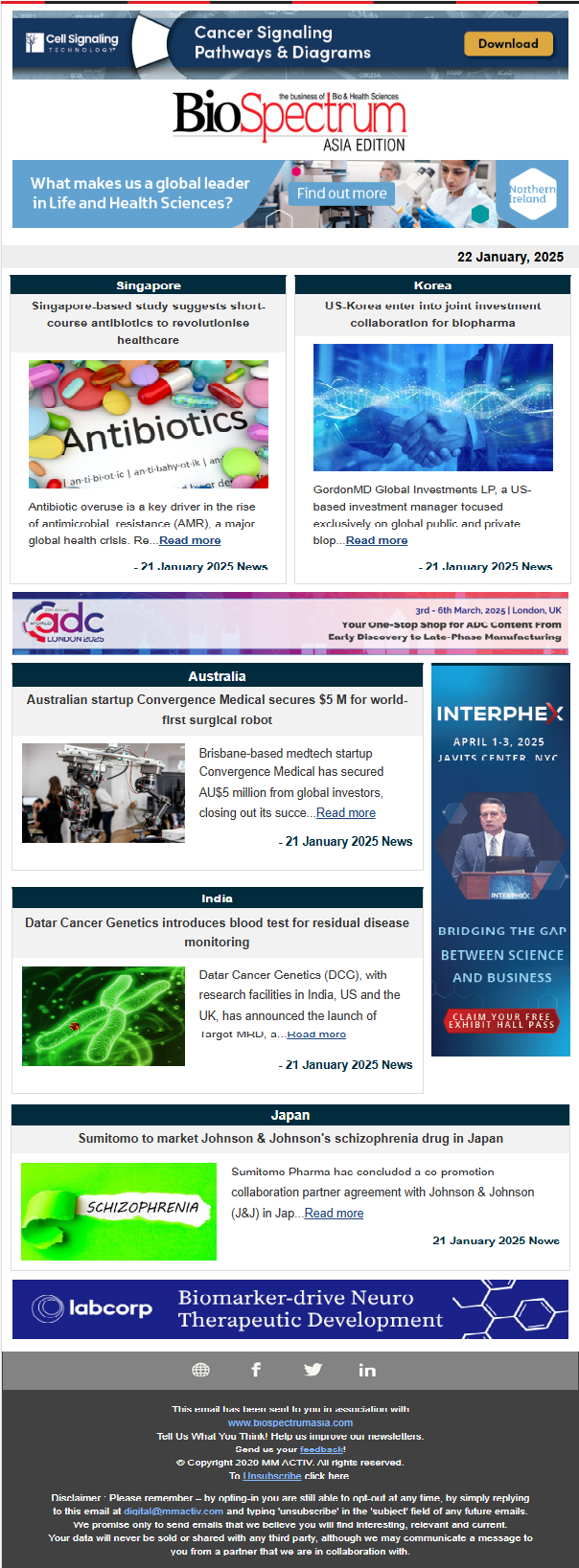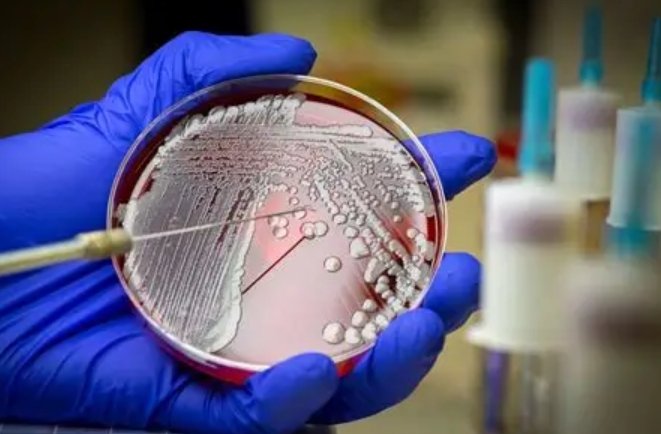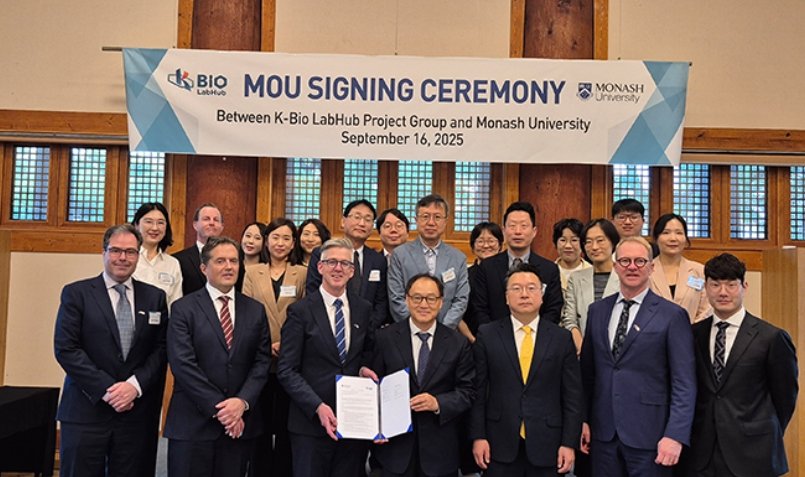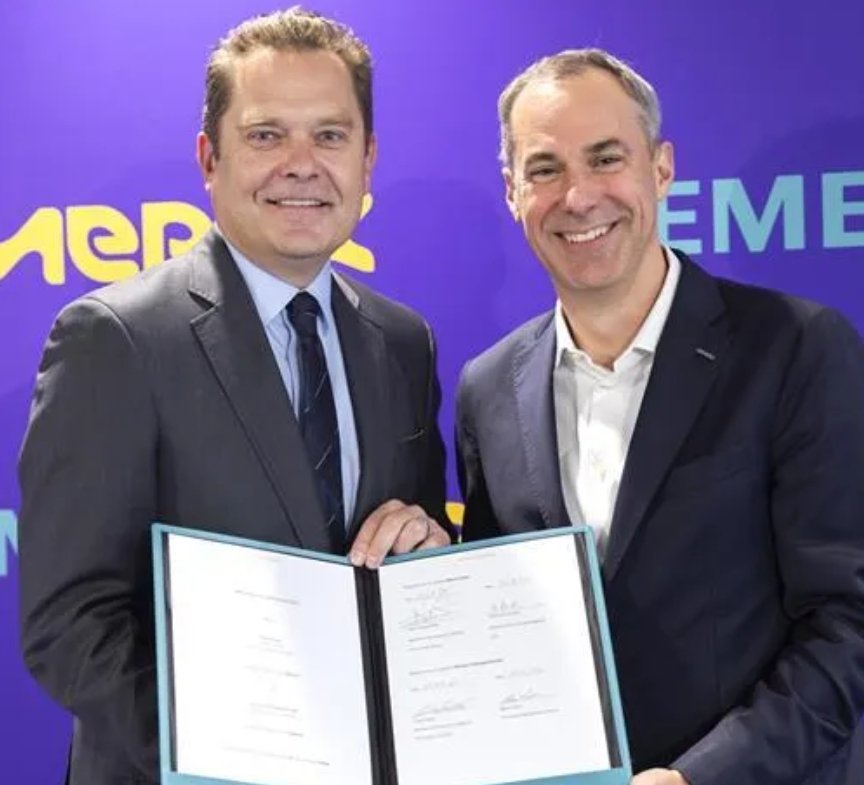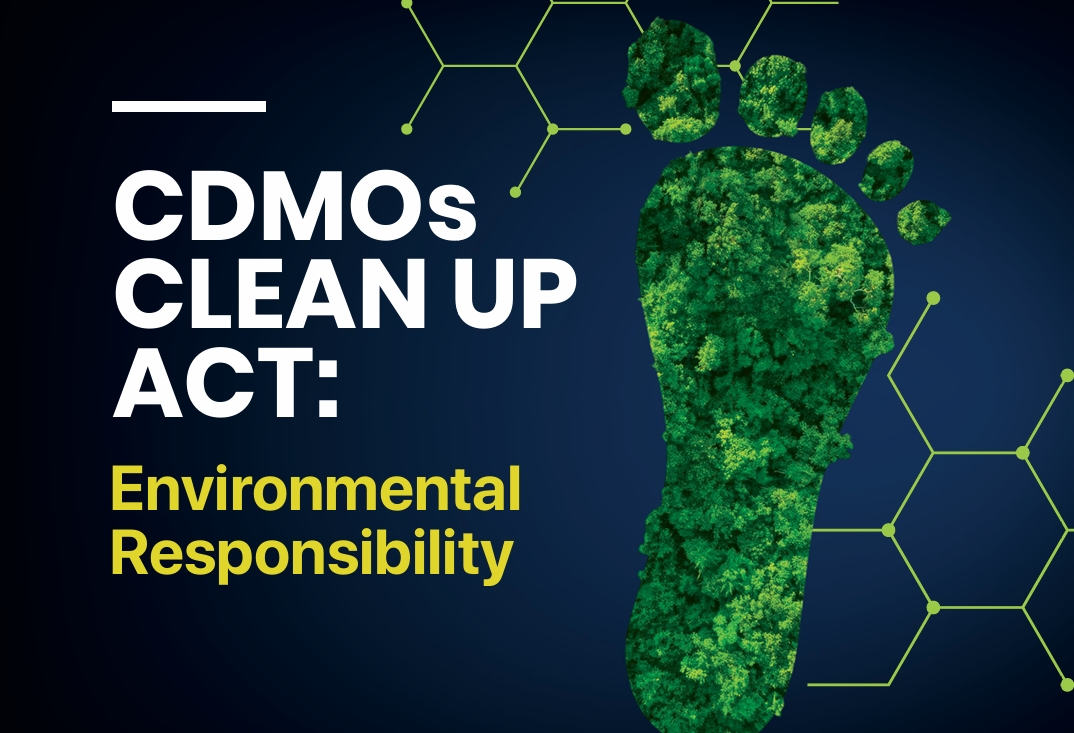
The pharmaceutical sector, which is one of the highest emitters of carbon, is no exception. According to Deloitte, more than 70 per cent of emissions produced by life sciences and healthcare companies come from their supply chains. In addition to emissions, the biopharma industry generates around 300 million metric tonnes (MMT) of plastic waste and 200 MMT of CO2 annually.
In response, many leading pharmaceutical manufacturers have committed to reducing their carbon footprint, minimising waste generation, and lowering water and energy consumption. A 2023 survey by CPHI found that 60 per cent of executives believe innovators will require CDMOs to implement sustainability metrics as part of their contracts within the next two years. Furthermore, 93 per cent of executives emphasised that visibility into supply chain partners' sustainability records is either ‘extremely important’ or ‘important.’
In 2023, CEOs from several major pharmaceutical companies signed an Open Letter on Supplier Targets as part of the Sustainable Markets Initiative Health Systems Task Force. The letter calls on suppliers and CDMOs to assess their CO2 emissions, adapt their manufacturing processes to be more eco-friendly, and set clear sustainability targets.
Beyond the efforts of big pharma, larger industry-wide initiatives are also taking place. In 2024, AstraZeneca, Lonza, Novartis, Novo Nordisk, and Roche signed an agreement with Envision Energy in China, gaining access to renewable power. This initiative is expected to result in annual carbon dioxide equivalent savings of approximately 120,000 tonnes.
Similarly, in 2023, global healthcare leaders from the Sustainable Markets Initiative Health Systems Task Force began advanced discussions with energy providers in China and India to scale renewable power across their supply chains. This collaborative effort aims to drive sustainability in these key markets, which together account for up to 50 per cent of pharmaceutical manufacturing materials. The power agreements in China aim to add 70 megawatts (MW) of renewable energy to the grid annually, saving an estimated 120,000 tonnes of CO2e annually, while the India initiative will support suppliers in several states.
In 2021, the Energize supplier consortium was established to help suppliers, including CDMOs, reduce their carbon footprints through cleaner energy sources. The consortium, which includes major drug developers such as AstraZeneca, Boehringer Ingelheim, GSK, and Pfizer, now has 25 members, all working towards a common goal of sustainability. CDMOs are therefore adapting to the changing landscape. Majority of the CDMOs, have published sustainability reports and set targets aligned with net-zero goals. Most of the CDMOs have also joined initiatives such as The Science Based Targets initiative (SBTi) and CDP (formerly known as the Carbon Disclosure Project).
“There are several factors driving sustainability to become a central focus for the CDMO industry. With increasing regulations and guidelines from governments and international organisations, pharmaceutical service providers are feeling pressured to implement more sustainable practices to maintain compliance and effectively operate in the market. They are also driven by customers and patients who are becoming increasingly environmentally conscious and demanding of sustainable products and processes across the value chain. Therefore, CDMOs that prioritise sustainability and make intentional efforts to integrate it into their corporate strategy will likely attract more customers and foster long lasting partnerships,” said Benjamin Walter, Senior Vice President Technical Services and Internal Project Management, Vetter Pharma-Fertigung GmbH & Co KG. Vetter is a global CDMO with an enduring commitment to sustainability.
Key Focus areas
CDMOs are adopting sustainable practices by utilising single-use bioreactors, continuous flow manufacturing, and biocatalysis to reduce waste and enhance efficiency.
Single-use bioreactors (SUB) may seem paradoxical, but they offer significant benefits in terms of reducing product and packaging waste when compared to traditional 2,000L workflows. Many CDMOs are increasingly adopting SUBs for their efficiency and sustainability. For instance, WuXi Biologics, a contract research, development, and manufacturing organisation (CRDMO), successfully installed three new 5,000L single-use bioreactors at its MFG20 drug substance manufacturing facility in Hangzhou, China. Similarly, AGC Biologics has begun operations at a new manufacturing facility in Copenhagen, which incorporates the latest mammalian systems and single-use technology, including a production line with eight 2,000L bioreactors.
Merck has launched the first single-use reactor specifically designed for manufacturing antibody-drug conjugates (ADCs), highlighting the growing trend toward adopting single-use systems for specialised drug production.
Continuous flow manufacturing and biocatalysis are driving key advancements in sustainability, through the concepts of reduce and replace. Biocatalysis plays an important role in enhancing the sustainability of active pharmaceutical ingredient (API) manufacturing.
China-based Asymchem has made significant strides in the areas of flow chemistry and biocatalysis. In collaboration with AbbVie, Asymchem implemented a large-scale photoredox trifluoromethylation process using continuous flow. This process leverages a more sustainable trifluoromethylating reagent, requires very little catalyst, and uses light as a favourable energy source to drive the reaction. Similarly, Asymchem’s partnership with Amgen led to the development of another photochemical continuous flow process, which earned the CMO Excellence in Green Chemistry Award from the ACS GCI in recognition of their efforts in advancing pharmaceutical green chemistry technologies.
Similarly, enzyme engineering company Codexis has been instrumental in helping Pfizer develop a high-performance, sustainable manufacturing process for nirmatrelvir, the API in PAXLOVID. This innovation has significantly reduced reliance on traditional, resource-intensive chemical synthesis for the antiviral therapeutic, for treating mild-to-moderate COVID-19.
The UK-based biotech company Prozomix and Ginkgo Bioworks have partnered to advance the production of next-generation enzyme plates for API manufacturing. This collaboration combines Ginkgo's expertise in Enzyme Services and AI/ML models with Prozomix’s enzyme libraries and deep manufacturing experience, driving further innovation in the field of sustainable pharmaceutical production.
Technology
The CDMO partners are investing strategically in the expansion of technology and infrastructure in their business to incorporate additional sustainable practices. CDMOs are leveraging technologies such as AI, micellar technology, and energy-efficient photovoltaic (PV) technology to enhance sustainability and improve operational efficiency across their operations.
“We have entered into partnerships with solution providers like ‘Elio’- where we co-designed an AI based tool to source the most sustainable consumable options- to push solutions that are beneficial for the whole industry. We can also use the tools to work with our customers to find solutions that will also reduce their value chain emissions including scope 3,” said Prof. Dr. Hanns-Christian Mahler, CEO, ten23 health, Switzerland. Ten23 Health is a sustainable CDMO and the first biotech and sterile drug product CDMO in the pharmaceutical sector to achieve B Corp certification.
Apart from AI, CDMOs are also partnering to develop micellar technology, Hovione, the specialist integrated CDMO, has signed an agreement with Dragonfly Technologies, Inc. to gain access to its micellar technology for chemistry-in-water processes, developed by Prof. Bruce Lipshutz of the University of California, Santa Barbara (UCSB). Hovione aims to further progress the technology to make it an integral part of its API manufacturing technology offering solutions.
And, of course, CDMOs are investing in energy-efficient technologies such as photovoltaic (PV) systems. Talking about the use of PV systems Walter said “Advancing technology will continue to offer service providers new opportunities to enhance their sustainable business practices. Installing energy-efficient technology, such as photovoltaic (PV) systems, can lower operational costs at manufacturing facilities, making sustainability economically viable for CDMOs and their customers. We have used 100 per cent green electricity since 2014, and implemented several sustainability optimisation projects in recent years that have contributed to energy and cost savings of about 25 million kilowatt hours. The PV roof systems alone generate 7.3 million kilowatt hours of electricity. These energy optimisation programmes will continue to improve as technological advancements progress, further making sustainability a more realistic focus.”
Other measures
CDMOs are also taking various other measures to drive sustainability, including recycling industrial wastewater, reducing waste, and optimising packaging and heat usage. These efforts help conserve resources, minimise environmental impact, and align with green manufacturing practices.
Recycling industrial wastewater
Wastewater used in factories is generally treated by activated sludge treatment using microorganisms and sedimentation separation. “To reduce the burden on the environment, we have adopted a treatment method that combines the membrane treatment with microbial treatment at three factories (one of which is currently undergoing renovation work to further reduce the environmental impact), and this treatment method allows us to steadily discharge very clean wastewater with a very low environmental impact. At the Kawagoe factory, where our head office is located, we use membrane-treated effluent as make-up water for the cooling towers of the chillers in our air conditioning system, reducing the amount of city water we use and the burden on the environment,” said Tadahiro Katayama, EHS Promotion Group Manager, Sustainability Promotion Department, Bushu Pharmaceuticals Ltd., Japan. Bushu Pharmaceuticals is a dedicated contract manufacturer of pharmaceutical products and clinical trial materials and medical devices.
Recycling waste
Throughout the pharmaceutical chain, a large amount of industrial waste is inevitably generated, such as plastic containers used to transport intermediate products, leftover packaging materials, unnecessary printing paper, etc.
“We are continuously promoting material recycling to reduce these industrial wastes and recycled approximately 430 tonnes of unneeded materials for material recycling at the Kawagoe Misato and Aizu factories in FY2023. This amount is equivalent to approximately 22 per cent of the total amount of unneeded materials which become industrial waste. We will actively promote these activities going forward continuously,” said Katayama.
Ten23 health also takes initiatives to reduce waste. “We have internal targets to reduce the waste we send to incineration, and we offset plastic waste sent to incineration, through a partnership that removes plastic from the ocean environment,” said Prof. Mahler.
Packaging
The pharma industry has made significant moves toward shifting to more environmentally friendly packaging. “For example, switching to environmentally friendly packaging materials (paper packaging containers, recycled plastic containers, biomass plastic containers, etc. with our customers,” said Katayama.
“We are planning investments into new capacity and capabilities of sustainable packaging, such as all-paper packaging equipment. We are growing our focus on developing secondary packaging and process optimisations, including PVC-free internal transport trays, and plastic-free tamper-evident labels,” said Walter.
Switching to sustainable packaging can help reduce company costs. For example, Novo Nordisk replaced the plastic trays in its insulin pens with paper-based alternatives, reducing the weight and volume of the packaging by 80 per cent and 50 per cent, respectively. These sustainability changes positively impact their total cost of goods, leading to reduced transportation costs.
Recycling waste heat
“Our company maintains the pharmaceutical manufacturing environment with a central air conditioning system that uses cold and hot water for cooling and heating. Cold water, produced by a refrigerator, cools the air conditioner and returns at 12°C, while hot water, heated by a boiler, warms the air conditioner and returns at 35°C. The refrigerator consumes significant electricity, and gas is used for heating. To optimise energy use, we installed a heat pump to exchange heat between the cold and hot water, reducing energy consumption by the refrigerator and boiler,” said Katayama.
Taiwan-based Bora Pharmaceuticals has also implemented a waste heat recycling system at its Zhunan site (Taiwan) to improve energy efficiency and reduce environmental impact. The company focused on the steam system, where 1225 kg of steam per hour is generated by the boiler. Previously, some steam mixed with condensate was inefficiently released into the atmosphere. By modifying the exhaust pipe of the steam condensate system and connecting it to the heat exchanger of the process hot water system, Bora was able to recycle waste steam to preheat hot water. This initiative has led to significant benefits, including energy savings, reduced gas and water consumption, lower CO2 emissions, reduced pollution, and cost savings.
A more sustainable manufacturing future
Despite growing initiatives and a rising inclination to reduce carbon footprints, experts feel that the pharmaceutical industry is not doing enough. “The sector is responsible for 5 per cent of global greenhouse gas emissions and produces significant amounts of waste. Currently, companies in the pharma or CDMO sector seem focused on reporting and compliance to regulatory requirements related to sustainability reporting rather than focusing on initiatives and innovation needed to reduce their environmental footprint,” said Prof. Mahler.
As indicated by the International Sustainability Standards Board (ISSB), the disclosure of corporate sustainability activities is becoming a mandatory requirement. In addition, initiatives such as the usage of renewable energy, investing in sustainable practices, and advancing technology will become the central focus of sustainability in the CDMO industry over the next 5-10 years. This systemic shift must happen across the entire value chain, addressing issues that require mass and simultaneous action.
“We believe that product design must include sustainability as a key consideration, because up to 80 per cent of the overall footprint of products is determined in the design stage. Furthermore, innovation is required to rethink products and processes- e.g. moving away from plastics or single-use primary packaging containers that solely create waste and creating circular solutions- and therefore we have initiatives with our scientific and innovation departments to drive sustainable innovation,” added Prof. Mahler.
Many pharmaceutical companies have committed to sustainability goals, aiming for carbon neutrality. The primary initiative so far has been to switch to electricity derived from renewable energy sources, thus addressing Scope 2 emissions. However, many companies have yet to determine specific measures to reduce Scope 1 emissions.
“Going forward, we believe that promoting measures to reduce Scope 1 emissions will become one of the key focuses of sustainability, while also moving toward building initiatives across the entire industry value chain that include Scope 3 emissions. We believe that promoting measures to reduce Scope 1 emissions will become one of the central focuses of sustainability in the future,” said Katayama.
Currently, each of the companies that commit to these initiatives is calling on its business partners in their value chain to commit to sustainability efforts and disclose information.
“However, for companies located downstream in the value chain, it is inefficient to respond individually to requests from many business partners. Therefore, we believe that one of the central focuses of sustainability should be to establish a value chain engagement mechanism that can be shared across the entire pharmaceutical industry including the investment burden for achieving sustainability,” said Katayama.
“Investments into sustainable practices can be initially expensive, and although they can pay off in the end with production and energy efficiency cost savings, it's crucial for companies to be aware of how much they can reasonably invest into sustainability at this time to maintain a successful business now and in the future,” said Walter.
By consolidating and outsourcing pharmaceutical manufacturing to CDMOs early in the formulation stage, the energy required to maintain pharmaceutical manufacturing environments—one of the largest energy consumers in the industry—can be significantly reduced, leading to a lower environmental impact.
“It’s essential to have a forecast of the future to make sure the company knows what developments are feasible. Every CDMO must find its own path to sustainability within the framework of its corporate strategy,” said Walter. Looking ahead, CDMOs need to strive for a future that is both profitable and sustainable. As they evaluate where to expand and evolve areas of business capacity and capabilities, manufacturing partners need to adjust their practices carefully and with conscious intention.
Ayesha Siddiqui
